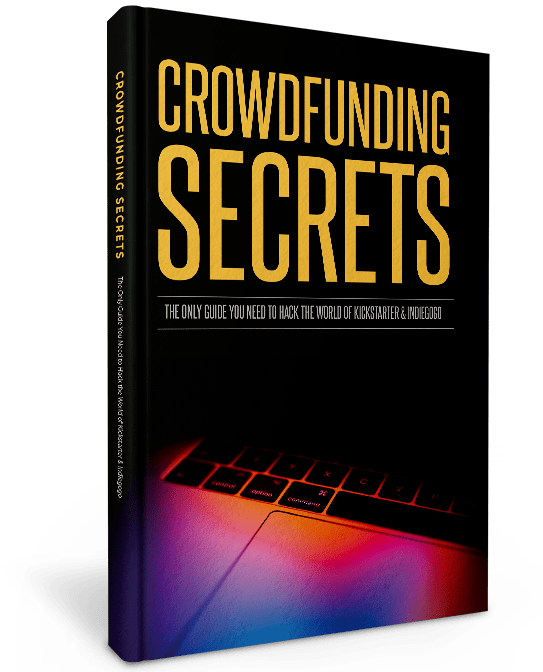Gone are the days when brands could just throw money at an ad and expect customers to come running. In today’s ecommerce landscape, it’s not about being loud; it’s about being helpful, relevant, and there when your customers need you. This is where inbound marketing for ecommerce comes in—a strategy built around attracting potential buyers with content they actually want to engage with.
If you’re tired of interrupting your audience with banner ads they ignore and email blasts that end up in spam folders, then it’s time to flip the script. Ecommerce inbound marketing is all about pulling customers toward your brand like a magnet, not pushing your products at them like a door-to-door salesperson. And in the competitive world of ecommerce, that kind of approach can make all the difference.
In this article, we’ll:
- break down exactly what inbound marketing is and why it’s perfect for ecommerce businesses;
- dive into the core strategies that work, from SEO optimization to content creation;
- show you how to level up your game with a few must-have tools.
By the end, you’ll have everything you need to attract more visitors, engage your audience, and convert those casual browsers into loyal customers.
Ready to get started? Let’s dive in!
What is Inbound Marketing?
Inbound marketing is all about attracting customers by offering value through content they actually need—whether it’s blog posts, guides, or tailored emails. It focuses on helping customers, not interrupting them, building trust over time. Ecommerce inbound marketing is broken down into four stages: Attract, Engage, Convert, and Delight.
Attract
At this stage, your goal is to bring the right audience to your site. Use SEO, social media, and blog content to draw in visitors who are already searching for solutions that your products offer. For example, a blog post on “Best Hiking Boots for Cold Weather” attracts outdoor enthusiasts in need of that specific product.
Engage
Once visitors are on your site, engage them with content that keeps them interested. This could be through personalized emails, product comparisons, or interactive tools like quizzes. The goal is to guide them toward a purchase by continuing to provide value without being pushy.
Convert
When visitors are ready, you convert them into customers. In ecommerce, this might mean offering clear calls-to-action (CTAs), easy checkout processes, or special incentives like discounts to encourage the final purchase.
Delight
After the sale, continue to delight your customers by offering post-purchase support, follow-up emails with product care tips, or personalized recommendations. This not only builds loyalty but encourages repeat purchases and turns customers into brand advocates.
Why Inbound Marketing is Key for Ecommerce
Inbound marketing works for ecommerce because it guides customers through every step of their journey, from attraction to conversion and beyond. By focusing on valuable, relevant content at each stage, you build trust and foster long-term relationships that lead to repeat business and brand loyalty.
5 Core Inbound Marketing Strategies that Work for Ecommerce
Now that we’ve covered what ecommerce inbound marketing is all about, let’s get practical. How do you turn these principles into action? Well, it’s not just about creating a few blog posts and hoping for the best. Inbound marketing for ecommerce is a mix of strategies working together to guide your audience from “Hey, this brand seems cool” to “I’m definitely buying from them.”
Now, it’s time to get into the nitty-gritty—the core strategies that attract, engage, and convert your audience—without feeling like a hard sell.
1. Content Creation that Educates and Engages
Content is your secret weapon in ecommerce—it’s what pulls customers in, gets them curious, and keeps them coming back. But here’s the catch: it has to be useful. Your content should help your customers solve problems, learn something new, or make a confident purchase decision. Here’s how to make it work:
-
Know your audience inside and out
What are their pain points? What questions do they need answers to?
Dive into customer feedback, reviews, and FAQs to understand what challenges your audience faces. Craft content that provides solutions—if your audience struggles with home workouts, create a blog post or video titled “Effective At-Home Workouts with Minimal Equipment.”
Answer the exact questions your customers are asking. It’s about being helpful, not pushy.
-
Create evergreen content.
This is content that stays relevant over time and continues to bring in traffic long after you’ve hit publish. Guides, how-to posts, and product comparisons are gold for ecommerce.
A post like “The Ultimate Guide to Choosing the Best Kitchen Appliances” will keep showing up in search results months—or even years—down the road, driving traffic and boosting your credibility.
Ensure the content is detailed, informative, and solves specific customer problems.
High-quality images and videos elevate your content. Product demonstrations, how-to videos, and infographics should be clear, visually appealing, and focused on showing how your product solves problems.
For example, a step-by-step video showing how to assemble furniture not only educates but also helps customers visualize using the product in their own space.
Good visuals build trust when customers can’t physically see or touch your products.
Got a killer blog post? Take key points from it and turn them into Instagram carousel posts, email newsletters, or chop it up for TikTok.
Convert data and statistics into an eye-catching infographic.
Break down a comprehensive guide into a simple, actionable checklist or cheat sheet that visitors can download or use as a quick reference.
Repurpose a webinar into a downloadable e-book or detailed guide for your audience.
Repurposing means you’re getting more out of each piece of content and reaching people where they like to consume information.
Storytelling transforms your content from a simple sales pitch into something relatable and memorable. When creating a product description or guide, frame your product within a real-life scenario that resonates with your audience.
Instead of just listing features of your skincare products, tell the story of someone with sensitive skin finally finding relief after years of searching, thanks to your hypoallergenic moisturizer. Highlight how your product transformed their daily routine and boosted their confidence.
Stories help customers envision your product in their own lives, creating an emotional connection and making the content more engaging.
-
Regularly Update Old Content
Don’t let your existing content go stale.
Review your top-performing posts and update them regularly to keep them relevant. Refresh old blog posts by adding new product features, updated statistics, or insights that reflect the latest trends in your industry.
Improve SEO by adjusting keywords based on current search trends, and add internal links to newer products or related guides. This keeps your content valuable for both readers and search engines, helping maintain or even boost its ranking over time.
Content creation isn’t just about filling space—it’s about helping your customers while showing off your expertise. Win-win!
2. Search Engine Optimization (SEO)
SEO might sound like a techy buzzword, but for ecommerce, it’s the difference between being found and getting lost in the crowd. If you’re not optimizing your site for search engines, you’re leaving money on the table—because no matter how great your products are, if people can’t find them, it’s game over.
This is where you figure out what your potential customers are searching for.
Start by brainstorming a mix of broad and long-tail keywords, focusing on specific phrases like “best ergonomic office chairs for back pain.” Prioritize long-tail keywords, as they have less competition and target customers ready to buy.
Analyze search volume and competition, and aim for terms with good volume but lower competition. Review your competitors’ top-ranking keywords to spot opportunities they might have missed.
Regularly update your keyword list to reflect trends and new product features.
Once you’ve got your keywords, you need to sprinkle them throughout your site—without overdoing it, of course. This includes optimizing your product pages, blog posts, meta descriptions, and image alt texts.
Start with title tags, product and meta descriptions—make them keyword-rich but user-friendly. Don’t forget image alt text to help search engines understand your visuals.
Clean up your URLs by making them descriptive, and add internal links to related pages.
Finally, focus on delivering a great user experience—clear navigation, scannable content, and strong CTAs to guide customers.
This means improving your site’s speed, ensuring mobile-friendliness, and making it easy for search engines to crawl your site.
Use Google PageSpeed Insights to diagnose any lagging pages. Reduce image file sizes with tools like TinyPNG, enable browser caching, and make sure you’re using a Content Delivery Network (CDN) to serve your site quickly to users all over the world.
Create an XML sitemap and submit it to Google Search Console to help search engines understand your site’s structure. Also, regularly check your robots.txt file to ensure you’re not accidentally blocking important pages from being crawled.
-
Don’t forget about content SEO
Creating high-quality, relevant content like blogs or guides that are optimized for search engines helps you rank higher and attract organic traffic.
Focus on producing high-quality blogs, guides, and product reviews that target the keywords you’ve researched. Ensure your content answers customer questions and solves their problems—Google loves helpful content.
Use H1, H2, and H3 tags to structure your posts, and naturally incorporate keywords throughout.
The more value and depth you provide, the more likely search engines will rank your content higher, attracting more visitors organically.
-
Keep an eye on your analytics
Once your SEO is set up, it’s time to monitor its performance. Tools like Google Search Console, SEMrush, or Ahrefs give you valuable insights into which keywords are driving traffic, how your pages are ranking, and where you might be losing visitors.
Track metrics like click-through rates (CTR), bounce rates, and keyword rankings to see where your site needs improvement.
Regularly review and adjust your strategy based on this data—SEO is a long game, and consistent monitoring is key to staying ahead of the competition.
3. Social Media Engagement and Community Building
Inbound marketing on social media is all about attracting, engaging, and delighting your audience without being pushy. It’s about creating value and fostering genuine connections that pull customers toward your brand naturally. Here’s how to leverage social media to build a community around your brand:
Instead of just pushing products, use social media to create discussions around topics that matter to your audience.
Ask open-ended questions, run polls, or invite feedback. For example, ask, “What’s your go-to piece for elevating a casual outfit?” and let your audience share their favorite fashion items.
Starting conversations pulls in new followers who are interested in those topics, aligning perfectly with inbound marketing’s goal of attracting through valuable interactions.
-
Leverage User-Generated Content (UGC) to Engage
UGC is the epitome of inbound marketing because it allows your audience to tell your brand’s story.
Encourage customers to share their experiences with your products and tag your brand. Repost their photos, reviews, and stories to engage new and existing followers. This not only builds trust but also shows your community that you value their input.
By showcasing UGC, you’re engaging your audience and empowering them to become part of your brand’s narrative.
-
Provide Value-Driven Content
Share content that educates or inspires your audience, such as tips, tutorials, or lifestyle advice that aligns with your products.
For instance, if you sell tech gadgets, post “Top 5 Must-Have Accessories for Your New Smartphone” or “How to Extend Your Laptop’s Battery Life.” This gives your followers useful information without directly selling to them.
This approach engages your audience while positioning your brand as a helpful resource, making them more likely to return.
-
Respond and Interact Promptly
Timely interaction is the key. When followers comment, ask questions, or mention your brand, respond promptly and thoughtfully. This goes beyond just answering questions—it shows you care about their experience with your brand.
Personalized responses also delight customers, deepening their connection with your brand.
Engaging with your audience in real-time fosters loyalty and builds a more connected community.
-
Run Contests and Giveaways
Contests and giveaways are a great way to attract new followers while keeping your current audience engaged. Ask followers to tag friends, share your post, or create content featuring your products.
This not only increases your reach but also turns your audience into active participants in your marketing efforts.
It’s an inbound-friendly way to attract new followers while engaging your existing community.
By focusing on authentic interactions, valuable content, and empowering your audience, social media becomes more than just a platform for promotion—it becomes a place where your community thrives.
4. Email Marketing and Personalization
Think of email marketing like being the helpful friend who always shows up at the right time with exactly what you need—whether it’s a recommendation, a reminder, or an exclusive offer. Inbound email marketing is all about delivering value and personalization, making sure your audience feels like every message is crafted just for them. Here’s how to turn your emails into a customer’s favorite inbox surprise:
-
Segment Your Audience for Relevance
Don’t send the same email to everyone. Segment your email list based on customer behavior, past purchases, or location.
For example, if someone has purchased a fitness tracker, create a segment to send them emails about workout tips, upcoming sales on fitness accessories, or new arrivals in smart health devices.
Segmented emails are more relevant, leading to higher open rates and engagement.
-
Craft Personalized Content That Drives Action
Use customer data to make your emails feel personal. Greet them by name and reference their previous interactions.
If a customer recently bought a camera, follow up with an email recommending accessories like memory cards, camera bags, or extra lenses.
Personalized product recommendations can increase conversions and make your emails feel more thoughtful.
-
Set Up Automated Email Sequences
Save time and boost engagement by creating automated email workflows that respond to customer actions.
For example, send a welcome series to new subscribers introducing your brand and offering a special discount.
If a customer abandons their cart, trigger an email reminding them of the items they left behind with a clear call-to-action, like “Complete Your Purchase.”
You can also set up post-purchase sequences that include product care tips or related product recommendations to keep customers engaged and coming back for more.
These automated sequences keep your brand top-of-mind without overwhelming your customers.
-
Offer Exclusive Content and Deals
Treat your email subscribers like VIPs by offering them special perks they won’t find anywhere else. Give them early access to sales, exclusive discounts, or sneak peeks of upcoming products.
For example, you could reward your most loyal customers with a VIP discount or grant your email list first dibs on limited-edition items before they go public.
This approach not only keeps your audience engaged but also makes them feel valued, driving repeat purchases and increasing loyalty.
-
Continuously Test and Optimize
Fine-tune your email campaigns by regularly testing different elements like subject lines, email content, and calls-to-action.
Run A/B tests to compare which subject lines get the best open rates or which CTAs drive the most clicks. Keep an eye on key metrics like click-through rates and conversion rates, and adjust your strategy based on what works.
Small tweaks, like testing email lengths or button placements, can make a big difference in performance.
Keep testing and refining to ensure your emails stay effective and engaging.
With personalization, segmentation, and automation, email marketing can become a high-converting tool that delivers real value to your customers. The key is making every email feel timely and relevant.
5. Lead Magnets & Marketing Automation
A lead magnet is a valuable piece of content or offer that you give to your audience in exchange for their contact information—typically an email address. It’s a crucial part of inbound marketing because it attracts potential customers by offering something useful.
Combine this with marketing automation, and you’ve got a powerful system that nurtures leads automatically. Here’s how to set up an effective lead magnet and automation strategy:
-
Create Valuable Lead Magnets
A lead magnet must offer something that solves a problem or delivers real value to your audience. Examples include a free guide, checklist, or an exclusive discount.
If you sell fitness gear, for instance, offer a “Home Workout Routine” guide. Make sure it’s something that resonates with your audience and makes signing up worth their while.
-
Design Easy-to-Use Signup Forms
Make the process of signing up for your lead magnet seamless by creating user-friendly forms. Place these forms strategically on your website—on landing pages, blog posts, or pop-ups—so visitors can’t miss them.
Keep the form short and simple, asking only for essential information like name and email.
A frictionless signup form increases conversion rates and gets more leads into your funnel.
Once a lead signs up, set up automated workflows to nurture them. This could be an automated sequence where they receive related content, product recommendations, or even reminders about seasonal promotions.
For instance, after downloading your camping checklist, send follow-up tips about choosing the right gear or introduce related products automatically.
-
Analyze and Optimize Lead Magnet Performance
Track your lead magnet’s effectiveness by measuring signups, engagement, and conversion rates.
If a lead magnet isn’t performing, consider revising the offer or testing different placements.
Continuously refine your lead magnets and automation to ensure you’re maximizing conversions and keeping leads engaged.
Lead magnets paired with marketing automation help you capture leads and keep them engaged, turning interested visitors into loyal customers without the constant manual effort.
10 Tools to Level Up Your Ecommerce Inbound Marketing Game
To implement the inbound marketing strategies we’ve covered, you’ll need the right tools to help automate processes, analyze data, and engage your audience. Here’s a list of tools that will elevate your ecommerce inbound marketing efforts:
1. Trustpilot or Yotpo
Both Trustpilot and Yotpo are great for analyzing customer reviews to identify common issues. Yotpo focuses on product-specific insights, ideal for creating targeted content like product guides. Trustpilot provides broader feedback, helping shape FAQ sections or educational content based on overall customer sentiment.
2. Lumen5
Lumen5 is a tool that allows you to quickly convert blog posts into engaging videos by automatically turning your written content into dynamic, shareable video formats. It’s ideal for social media platforms like Instagram or YouTube, where visual content performs best.
Simply input your blog text, and Lumen5 will generate a video with relevant images, animations, and music, making it easier to repurpose content and reach audiences who prefer video over reading.
3. SEMrush or Ahrefs
Both offer powerful keyword research tools that let you analyze search volume, competition, and identify keyword opportunities. These tools also allow you to review your competitors’ top-ranking keywords.
4. Google Analytics
Google Analytics helps you track traffic, bounce rates, CTR, and user behavior. By analyzing these metrics, you can spot areas for improvement, refine your SEO strategy, and optimize content to drive more engagement and conversions.
5. Hootsuite or Buffer
These tools let you schedule posts, run polls, and monitor engagement. You can use them to manage conversations across different platforms, ensuring you interact with your audience in real-time.
6. CapCut or InShot
These tools let you edit videos quickly on your phone, adding music, text, and effects. You can use them to create engaging short-form content for platforms like TikTok and Instagram, enhancing your videos with transitions, filters, and speed adjustments.
7. Mailchimp or Klaviyo
These tools help you segment your audience, automate workflows, and craft personalized email content. Use them to send tailored emails based on customer behavior, purchase history, and interests to boost engagement and conversions.
8. ActiveCampaign or Drip
These platforms allow you to set up automated email sequences, such as welcome series, cart abandonment reminders, and post-purchase follow-ups. They make it easy to stay top-of-mind without overwhelming your customers.
9. Leadpages or OptinMonster
These tools help you create easy-to-use, high-converting signup forms and landing pages. You can design frictionless pop-ups or embed forms on your website to capture leads effectively in exchange for valuable content or offers.
10. Typeform
A tool for creating interactive, user-friendly forms and quizzes to capture leads. Perfect for offering lead magnets like guides or checklists in exchange for contact info, helping increase conversion rates with a seamless user experience.
Conclusion
Inbound marketing is the key to standing out in a crowded ecommerce landscape by attracting the right customers and nurturing them through valuable, relevant content. Instead of relying on intrusive ads, you’re guiding potential buyers with helpful resources, personalized emails, and genuine social media engagement.
By implementing strategies we outlined in this article you not only draw customers in but keep them engaged throughout their journey. The tools we’ve covered will help streamline your efforts and ensure your strategies are data-driven and effective.
By integrating these ecommerce inbound marketing strategies and tools, you’ll be better positioned to attract, engage, and convert customers into loyal, repeat buyers.
Now that you’ve got the playbook, it’s time to execute and see the results for yourself!
Go turn the whole thing upside down!




Comments